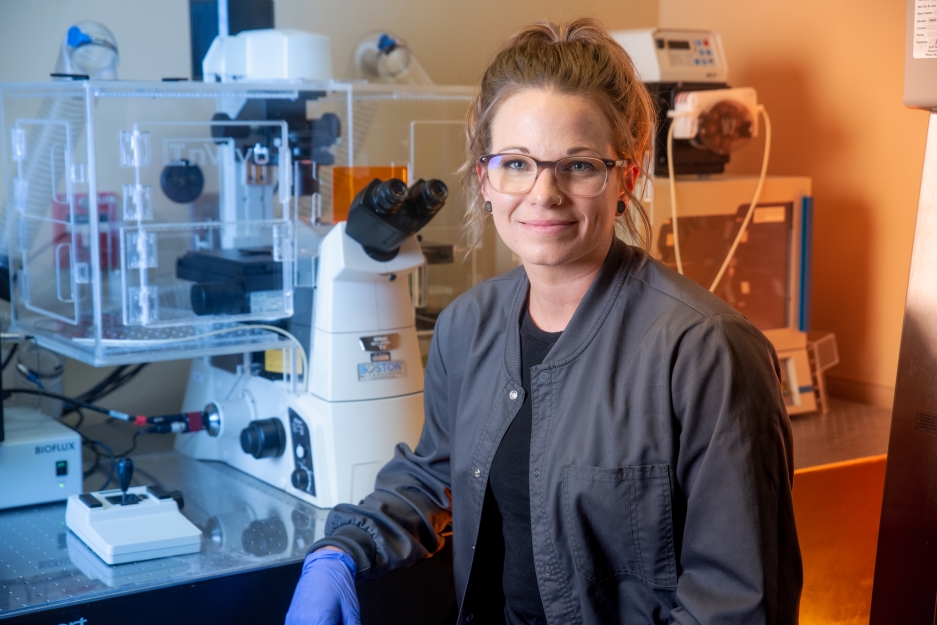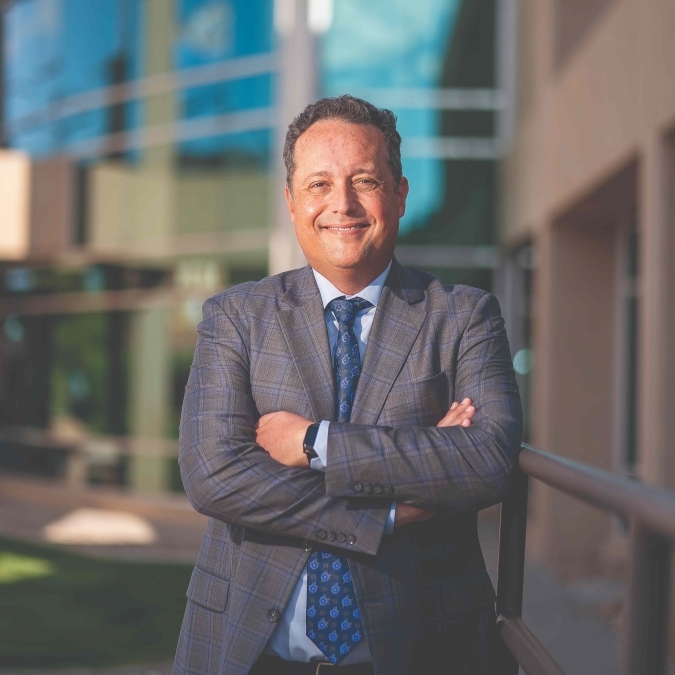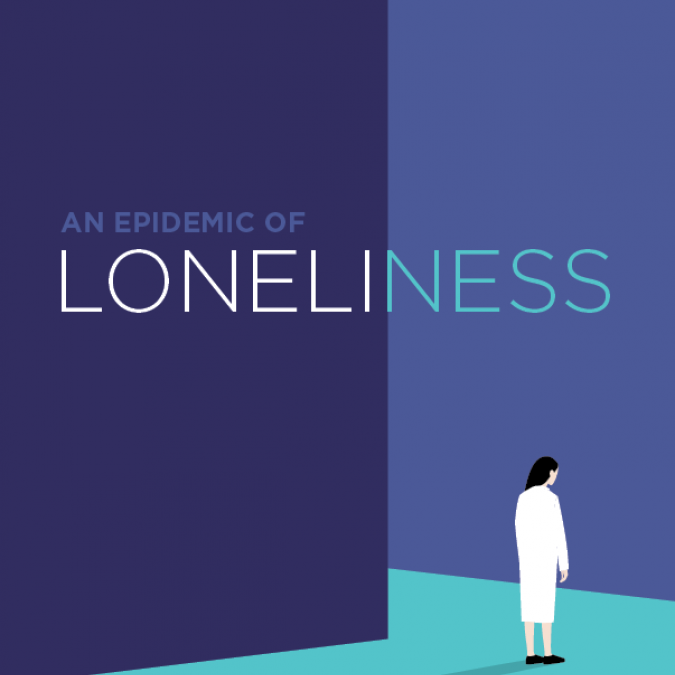In 2016, Laura Brunmaier decided to make a big change in her life. She left a successful and lucrative career in upper retail management and returned to school to finish her degree. “The standard of living was nice,” she explained with a chuckle. “But there wasn’t a lot of meaning behind it for me. I wanted to do something — more.”
Laura returned to school at SD Mines in Rapid City. Before she even completed her bachelor’s degree in applied biological science, she dove into biological engineering research projects, beginning with nanoengineering. In December 2018, she was introduced to Travis Walker, Ph.D., Associate Professor of Chemical and Biological Engineering, who was looking for a biomedical engineering graduate student to take on a project for making a vascular graft.
“I ended up leaving nano to start in Dr. Walker’s lab about six months before I finished my bachelor’s degree in May 2019. It was a head start on my Ph.D. work,” Laura said. “I knew we were making this vascular graft, a kind of replacement blood vessel, but I had to fill in a lot of details on how.”
Now Laura is a Ph.D. candidate and continues her work developing the vascular graft as a graduate research assistant in biomedical engineering at SD Mines. Her research focuses on creating new blood vessels in a lab that can be used during cardiovascular surgeries to replace damaged tissues. Even more impressive, these grafts will be made out of the biological material that’s already in the human body.
Laura’s research centers around engineering substances found naturally in the human body to create new blood vessels for patients. Currently, the options for blood vessel grafting are limited to harvesting existing blood vessels from other parts of the body or using synthetic materials to create sections of blood vessels. Both of these methods have their drawbacks.
Revolutionizing Cardiology
“Our goal for this graft is to have it made out of natural polymers — materials that you would find in the body,” she explained. “A lot of grafts are made from synthetic polymers, and there’s been some success with that, but there are also downsides.”
One example of these drawbacks is with pediatric patients. A child who receives a synthetic graft will need repeated surgeries as they grow to replace the artificial vessel with a better fitting one. That won’t happen with the natural polymers being used by Laura. “It was important to me to use a material capable of being remodeled by the body, which you can do with natural polymers. The cells can actually break down those materials on a micro-level, restructure things and relay proteins as well. That allows the material to be incorporated into the tissue.”
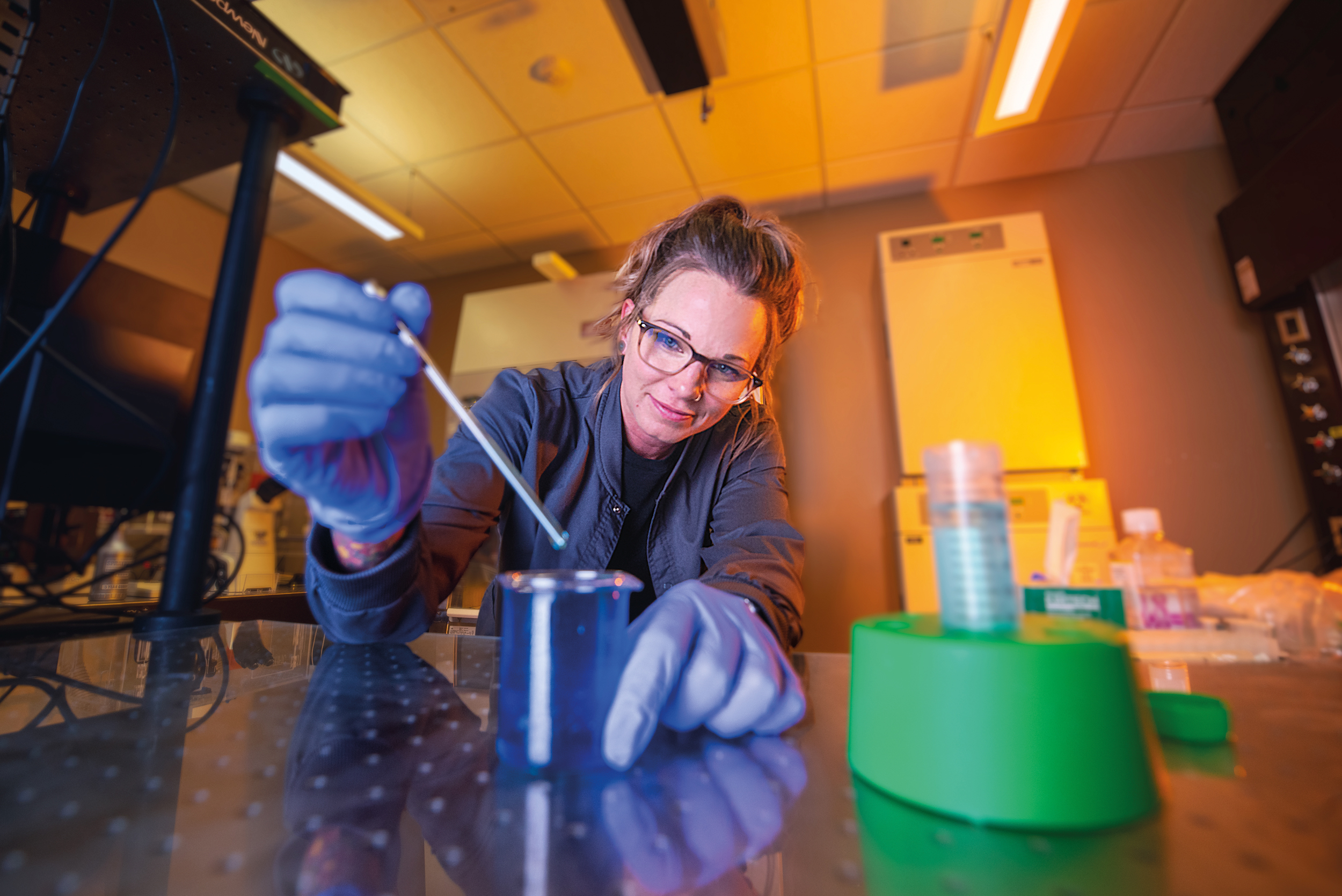
While these grafts have the potential to be used throughout the body, Laura was particularly interested in creating a graft that can be used in the heart — replacements for coronary arteries, to be specific. Heart disease has had a significant impact on her and her family. Her father struggles with high blood pressure, and both of her maternal grandparents as well as her mother passed away from heart attacks. “Heart disease has affected everyone in my family, and it’s something that I’m very conscious of,” she said. “Our goal is to make a blood vessel, and we have the perspective of how that will make a difference in the fight against cardiovascular disease.”
The challenge with creating a replacement vessel that will be used in the heart is the amount of pressure involved. The heart beats between 60 to 100 times every minute, moving five to six liters of blood in the process. Many natural polymers don’t have the strength to withstand the constant and consistent pressure generated by the heart.
In September 2021, Laura was awarded a National Science Foundation Graduate Research Fellowship to fund her research and to provide her with a stipend while she finishes her Ph.D. The fellowship aims to strengthen and ensure the quality and longevity of the scientific and engineering workforce in the U.S., with an emphasis on diversity and broadening the participation of underrepresented groups.
Since 1952, the National Science Foundation has funded over 60,000 Graduate Research Fellowships, with more than 450 fellows joining the National Academy of Sciences and 42 fellows going on to become Nobel laureates.
A Real World Understanding
To better understand the forces that her grafts would need to endure, and to learn about how these materials might be used in the clinical environment, Laura worked with Cardiologist Bhaskar Purushottam, M.D., FACC, FSCAI, FSVMB, and Cardiothoracic and Vascular Surgeon Kalyan Vunnamadala, M.D. These physicians invited Laura to observe related surgical procedures in order for her to have a better understanding of what these grafts will need to withstand in the human body.
“They’re both really great doctors and great people. I’ve worked with Dr. Purushottam longer because he does more of the interventional work putting stents in place,” said Laura. “I shadowed Dr. Vunnamadala and got to watch him perform open heart surgery and harvest veins from the leg. Both of them have been very open to any questions and conversations with me. They communicate really well, and even though I know they’re incredibly busy, they’re also very responsive. They have been really incredible collaborators for me.”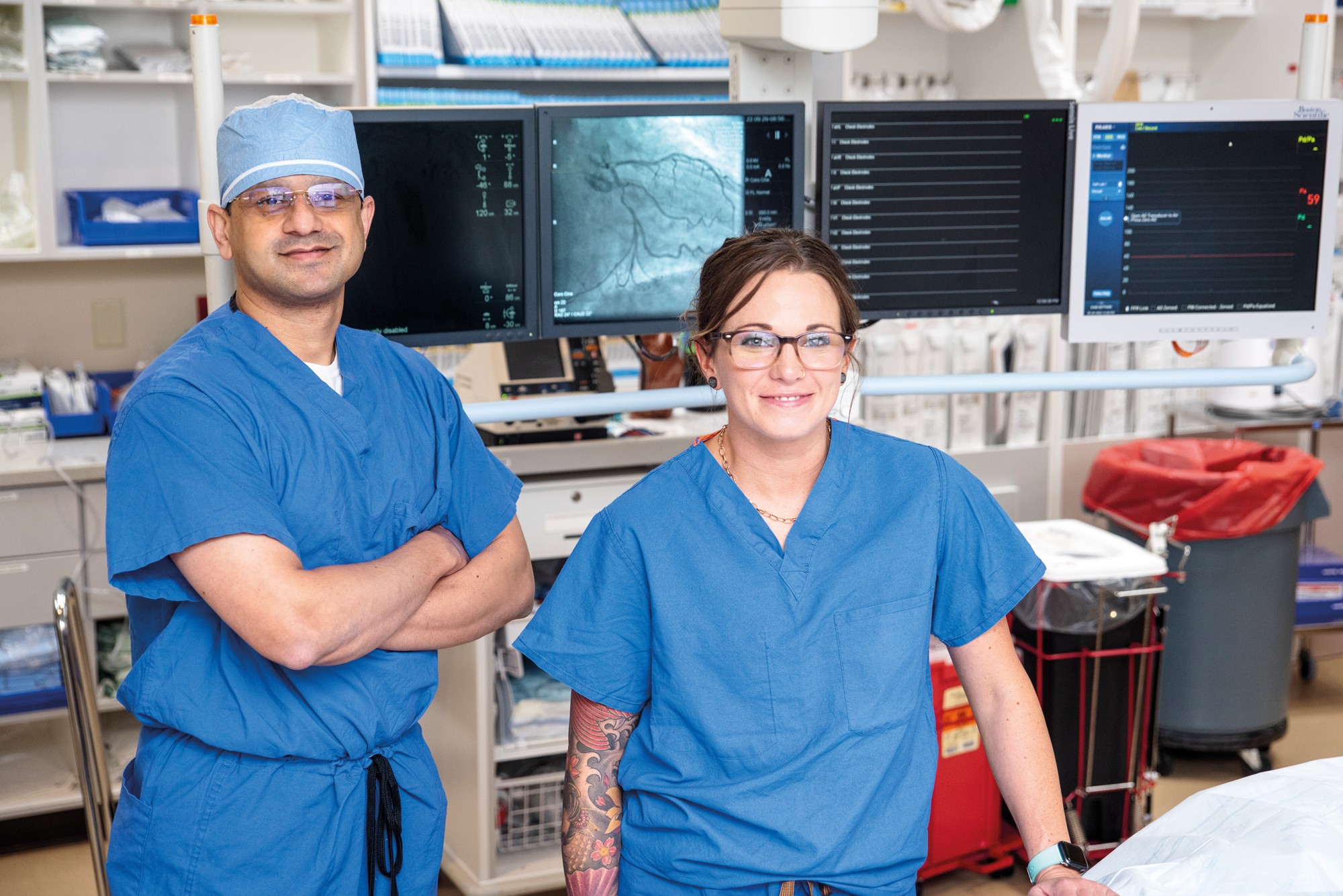
“Synthetic polymers have their downsides, but natural polymers come with challenges as well. We can do different types of testing in the lab to understand the mechanical strength, but natural polymers and the way that they’ve been processed previously, are just inherently weaker unless we go in and modify certain things. When you make certain modifications, sometimes you can take away that ability to have the material remodeled by the body.
Our focus is really using certain polymer processing methods to take advantage of alignment of microfibers to enhance the mechanical properties of the graft. Right now, I’m looking at three, possibly four distinctively different layers. I’ve made a three layer graft out of collagen — collagen is really easy to work with just to test some of our processing methods — and now I’m back on the computer researching, trying to figure out different ways that people have processed other materials and what methods we need to use to make it more mechanically sound. Once those projects are done, I’m hoping to have most of my focus on this material’s processing to create the second generation of this graft.” Laura said.
Where No One Has Gone Before
Building a blood vessel is no easy task. It involves creating specialized equipment to even get started. Laura and her team made an in vitro modeling device that allows them to model parts of the human anatomy outside of the body. “What we’re trying to do is model this small piece of the vascular system. I can put cells in this device to simulate the endothelium, the inner lining of blood vessels, and I can do all kinds of different tests on them,” she explained.
With two years left in her Ph.D. program, Laura is focused on completing her research. “Most of my focus has been the in vitro modeling device that we built and developing the second generation of the grafts. Once we wrap those things up, I’ll probably spend more time trying to figure out what my next steps will be,” she said. “I haven’t spent a lot of time thinking about my life after school because just trying to finish the design and get the work done is consuming in itself.”
